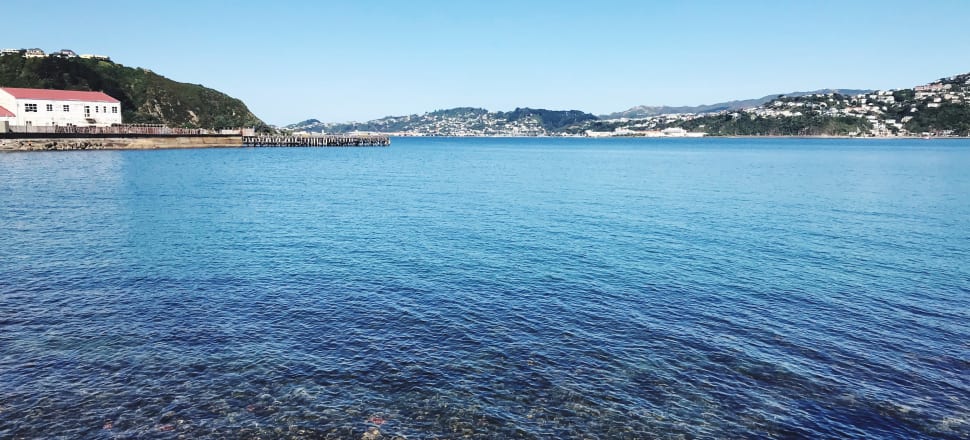
A poll commissioned by a new coalition intent on stopping an intensive housing development on Miramar Peninsula has found more than three-quarters of Wellingtonians want to see Shelly Bay wrapped into a planned national heritage park.
A campaign to buy back land intended for a housing development at Wellington’s Shelly Bay is gaining momentum.
A poll, commissioned by Buy Back The Bay and undertaken by Research NZ, surveyed 400 residents in mid-September.
It found almost 60 percent opposed the housing development and the majority wanted to see the site taken into public hands.
Buy Back The Bay Coalition spokesperson Mary Varnham said commissioning the research was an important first step.
“Shelly Bay has been a very long complicated saga. So that's why we decided to do the poll, just to really see what the public view was.
"We thought, well, we could be totally wrong about this. Maybe people really support this housing development.”
But the results were quite the opposite.
Over half (58 percent of) the respondents preferred the option of turning Shelly Bay into a new national heritage park, compared with 29 percent who preferred the housing development.
Respondents were then asked whether they would like to see the land added to the planned heritage park on adjacent land of which 78 percent – including some who initially preferred the housing development option – agreed with.
Varnham, an experienced campaigner, said the idea of a buyback now seemed like the only way to peacefully resolve the land use at Shelly Bay.
“People are getting increasingly desperate, you know, as that development seems to be proceeding... how can it be stopped?”
The plans for Shelly Bay by The Wellington Company include a waterfront walkway, green space, parking and seating, cafes, bars and shops, a microbrewery and a 50-bed hotel.
The development would also add 350 houses to the peninsula.
But concerns are centred around the impact on infrastructure, including road access, the effects of sea-level rise, as well as recognition of the area’s rich history.
The plan to develop the former military base has been complicated and controversial.
The Port Nicholson Block Settlement Trust (PNBST) was established in 2008 to receive and manage the Treaty settlement package for Taranaki Whānui ki Te Upoko o Te Ika – of which the land at Shelly Bay was a part of.
However, whether the sale of the land by PNBST in 2017 was even legal remains unanswered, due to Taranaki Whānui members voting against the sale but it proceeding anyway.
A claim has been filed in the Māori Land Court by Mau Whenua, who are Taranaki Whānui members. The court has yet to decide whether it will hear it.
"There's still a lot of time before the company could actually begin to build anything. So we think there's a lot of time to stop it.” – Mary Varnham
Another aspect has been the lack of public consultation.
This was due to the Wellington City Council declaring the land in 2015 to be designated a Special Housing Area (SHA) - a law that had come in the year before to help areas ramp up housing development where there was a shortfall.
Wellington mayor Andy Foster, who was a city councillor at the time, voted against this move.
He maintains it was the wrong thing to do.
“It changed the planning rules dramatically and allows a level of intensive development on the site which was absolutely not expected and it also means that the community didn't get to have a say in what happened or the ability to participate in the resource consent process.”
The city council owns about a third of the land at Shelly Bay but also agreed to sell it to Cassell's company in 2017.
That decision was confirmed again in 2020.
Too little too late?
Varnham said there was still time to change the fate of Shelly Bay.
“There's quite a few things they have to do before they can even think about building. For example they have to fix up the access road, that's part of their consent because obviously it's going to be subject to huge numbers of thundering construction vehicles and that's very dangerous for all users and nothing's been started on that yet.
“The building consents haven't been issued at all so although it looks as though a lot is happening in fact, it's mainly demolition [and] there's still a lot of time before the company could actually begin to build anything. So we think there's a lot of time to stop it.”
She said a promise by the government and $4 million worth of funding set aside to transform most of the peninsula into a national heritage park had been sitting in limbo, and getting Shelly Bay included within the plans was the best option.
“So who would pay for it is something that we just have confidence would be worked out in time. It could be a mix of government and city council funding, it could even be private donor funding included in the mix. It's not something that we feel we have to work out right now.
"We just want to establish the principle that the land should come back into public ownership, one way or another.”
“Like many things in Wellington that have to be saved, they started off quite a small way... I think Wellingtonians really appreciate history and the natural landscape [and] there’s a great sort of uptake here of support for these kinds of things.”
Results from the poll are based on the total sample of n=400 are subject to a maximum margin of error of plus or minus 4.9 percent.







